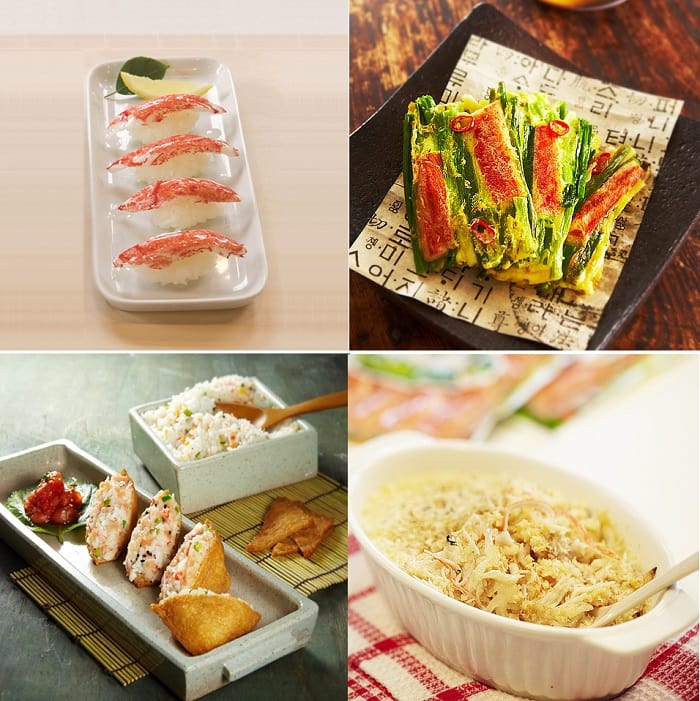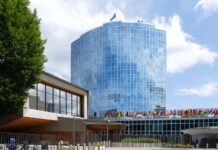One of the most popular picnic foods is gimbap, rice rolled in edible seaweed with a variety of ingredients. Among them is an essential ingredient. Without it, people would not enjoy their snack as much. It is processed crab sticks, or gematsal.
Reddish, chewy and with a slightly gooey texture, crab sticks imitate real crab meat in terms of taste and fragrance. They’re best known as an ingredient in rice rolls, but they can be used in more diverse dishes, too. They can become “crab sushi” when thinly sliced and squeezed into tiny rice balls. They can come in a crab salad with vegetables, and also be the key ingredient in pasta or fried tofu rice balls (yubuchobap). Some people say that crab sticks can even be a snack by itself, especially when paired with some beer or other alcohol.
Hansung Enterprise is one of the largest crab-stick producers in Korea. It began production some 50 years ago. Established in 1963, the company has run its own fleet of fishing vessels in the North Pacific since 1969. Fillets of Alaskan pollock first produced in 1972 were the first product in their line of crab sticks. Based on this, Hansung came out with “Hansung Crab Sticks” in early 1980, and introduced its “Crami” line, with an enhanced crab taste, in 2001.



Hansung’s Crami line of crab sticks has an enhanced crab taste and fragrance. It is delicious as the main ingredient for salads, pasta or even as snacks along with alcohol.
Compared with previous lines of crab sticks, Crami is chewier and has an enhanced crab flavor. It contains more fish flesh, such as pollock and cod, than other lines, all caught fresh in Alaska. It has no preservatives or artificial colors, and instead adds vegetable seaweed calcium. Also, it’s convenient and portable, as it’s small enough to eat in one bite. “Cheese Crami Balls,” launched following the original Crami line, have some cheese in the center. They are delicious and more nutritional than crab sticks alone, and are popular among children.
Currently, Hansung operates a fleet of 11 ships that sail around the South and North Pacific, along the coast of Argentine and in Indonesia. It obtained certification from the Marine Stewardship Council when it met certain international criteria covering its entire manufacturing process: catch, fishery management, distribution and manufacturing.

Crami crab sticks can be used in a diverse manner of ways. Pictured at top is Crami sushi and fried crab sticks and vegetables. At bottom are fried tofu rice balls with crab sticks and cheese Crami gratin.
Hansung’s crab-flavored products are available in many countries around the world, including the U.S., China, Australia, Canada, the Philippines, Kuwait, New Zealand, Fiji, Cambodia and the UAE.
Detailed information can be found at Hansung’s official website.
http://www.hsep.com
By Lee Seung-ah
Photos: Wi Tack-whan
Korea.net Staff Writers
slee27@korea.kr























